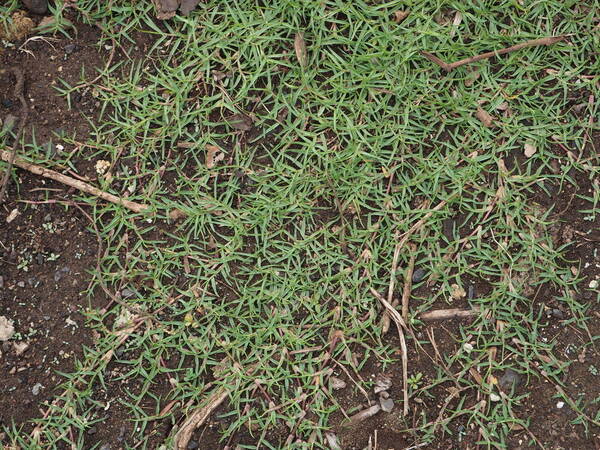Info
Subfamily: Panicoideae
Genus etymology: Paspalum = "millet" [Greek] some species are used as cereals
Species etymology: distichum = "in two rows" [Greek] refering to the leaf arragement
Photosynthetic type: C4 (warm season)
Nativity: naturalized - accidental
First recorded in Hawaiʻi: 1916
Map

Inflorescence



Plant


Habit



Spikelets

Landscape


Stolons



Description
Plants perennial; rhizomatous or cespitose. Culms 5-65 cm, erect; nodes glabrous. Sheaths glabrous, sparsely long pubescent distally; ligules 1-2 mm; blades to 14 cm long, 1.8-11.5 mm wide, flat or conduplicate, glabrous or pubescent, apices involute. Panicles terminal, usually composed of a digitate pair of branches, a third branch sometimes present below; branches 1.4-7 cm, diverging, often arcuate; branch axes 1.2-2.2 mm wide, winged, glabrous, margins scabrous, terminating in a spikelet. Spikelets 2.4-3.2 mm long, 1.1-1.6 mm wide, solitary (rarely paired), appressed to the branch axes, broadly elliptic, stramineous, sometimes partially purple. Lower glumes absent or, if present, to 1 mm and triangular; upper glumes sparsely and shortly pubescent on the back, 3-veined; lower lemmas glabrous, 3-veined; upper florets stramineous. Caryopses 1.9-2.1 mm, yellow. 2n = 20, 30, 40, 48, 60, 61.
(Description source: Barkworth, M.E., Capels, K.M., Long, S. & Piep, M.B. (eds.) 2003. Flora of North America, north of Mexico. Volume 25. Magnoliophyta: Commelinidae (in part): Poaceae, Part 2. Oxford University Press, New York. 783 pp http://floranorthamerica.org/Paspalum_distichum )